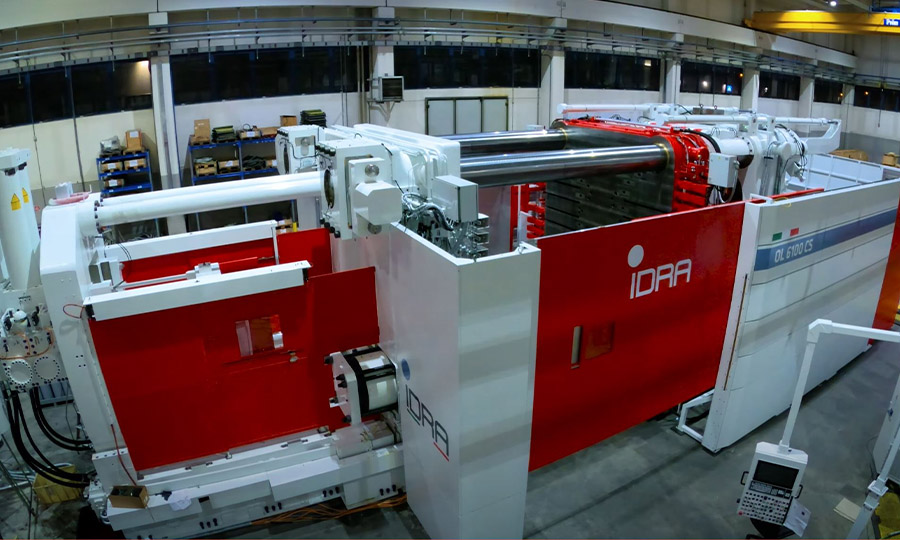Your cart is currently empty!

Tesla’s New Production Strategy: EV-Making Novelty And Cost Reduction
The Tesla name is synonymous with technological innovations. It has, for so long, been a source of reliable, powerful, and versatile electric cars. Last month, the EV brand developed a new production strategy that is an absolute game changer in EV-making novelty and cost reduction. These were the techniques that could Elon Musk build more advanced electric cars, but at a cheaper cost.
If you Recall, Tesla was the brand that pioneered the use of giant presses with between 6,000 and 9,000 metric tons of clamping power. These huge presses molded both the front and rear end of its Model Y. Called “gigacasting”, this process was a game-changer in halving production costs.
And just mid-September 2023, Tesla showed us that it had more tricks up its sleeves. The brand said that it was closing in on a new technology that would combine its EV’s underbodies into one piece. This is a huge feat, especially considering that the regular car underbody comprises nearly 400 parts. This new technology would slash the production costs by a lot. In this article, we will take a closer look at Tesla’s new production cost-cutting technology, the “unboxed” strategy, and how all this affects the entire EV landscape.
Tesla’s New Production Strategy “Unboxed”
Elon Musk himself developed and disclosed Tesla’s new “unboxed” manufacturing strategy started in March 2023. So many car manufacturing brands are joining the EV business. As such, cars are becoming cheaper. Musk plans on producing millions of EVs in the next couple of years, or decades and still making profits.
Terry Woychowski, president of U.S. engineering company Caresoft Global, shared his thoughts on the new strategy, saying “It is an enabler on steroids. It has a huge implication for the industry, but it’s a very challenging task.” He also said that this new production innovation would change car design and assembly. “Castings are very hard to do, especially the bigger and the more complicated,” said Woychowski, who worked for General Motors for over 30 years.
In theory, Tesla’s unboxed production strategy will involve manufacturing large sub-assemblies of the EV, and then simply putting the pieces together. With what Tesla has done lately, it’s impossible to rule this strategy out. But, while the plan seems plausible, the brand hasn’t shared any information about the make-up or size of these sub-assemblies. until we know, it remains a subject of speculation.
Shorter Development Timelines
Another benefit of the new manufacturing strategy is the shortened car development timeline. Thanks to the new production techniques, Tesla might be able to develop a car from scratch between 18 months to two years as opposed to the regular three to four years, a source told Reuters.
The single huge frame, which combines both the front and rear with the middle underbody sections could be the brand’s small EV. The sources said that this small EV may launch in the next few years, with a $25,000 price tag. The reduced price proves that Tesla’s strategy will keep development costs low.
Tesla was expected to make a decision on whether to die-cast the platform in one piece as soon as this month. Even if they do press ahead the end product could change during the design validation process.
They seem eager to forge ahead with the new production plans. But even if they do go on with it, the product, or in this case, the small EV to carry this new platform, may change during the design stage.
Tesla’s New Production Strategy: 3D Printing And Sand
Tesla’s innovation focuses on how massive molds for such a large item are produced and tested for mass production. They also focussed on how casts might integrate hollow subframes with internal ribs to reduce weight and improve crashworthiness.
In all instances, new technologies utilizing 3D printing and industrial sand. The tech comes from a team of experts from Britain, Germany, Japan, and the United States.
Because of the “gigacast dilemma” (that’s what we’re calling it), automakers have been hesitant to cast ever-larger structures. Apparently, making molds to create items 1.5 meters squared or larger increases efficiency. However, it comes with its costs and risks.
According to a casting specialist, once a huge metal test mold has been formed, machining modifications during the design phase may cost $100,000 every go. If not, the process may involve rebuilding the mold. This could cost upwards of $1.5 million. Another specialist told Reuters that the entire design process for a huge metal mold would cost around $4 million – a price automakers simply won’t allow.
Tesla Turned To 3D Printing Companies
The reason manufacturers won’t establish this is that a single design may require a half-dozen or more adjustments to obtain a flawless die in terms of vibration and noise, fit and finish ergonomics, and crash reliability. Despite the risks, Musk’s ambition from the start was to discover a technique to cast the underbody in one piece.
While these were huge challenges, Tesla wasn’t let down. The EV company turned to various companies that use 3D printers to create test molds from industrial sand. Binder jet printers use a digital design file to drop a liquid adhesive onto a thin layer of sand and progressively produce a mold that can die-cast molten alloys. As you would expect, one layer goes on top of the next.
A source even said that the cost of design validation using sand casting is cheap, even with many iterations. It is only about 3% of the cost of doing the same with a metal prototype. That means Tesla can iterate on prototypes as often as necessary. In theory, it would print a fresh one in a matter of hours with the help of equipment from businesses like Desktop Metal (DM.N) and its subsidiary ExOne.
Tesla’s New Production Strategy: Custom-made Alloys
As we all know, the subframes in a car’s underbody are typically hollow. Have you ever wondered why? Well. subframes are often hollow for weight reduction and improved crashworthiness. And it’s rather simple to achieve. The subframes are created by stamping and fusing numerous components together. This leaves an empty space in the center. Tesla hopes to follow the norm.
Tesla’s New Production Strategy also considers the same technique. The brand will incorporate solid sand cores printed by binder jets within the overall mold to cast subframes with hollows as part of one gigacasting. After the part is cast, they will then remove the sand. This will leave the same type of void in the center.
Tesla’s Alloy Challenges
Despite the increased flexibility in the whole process, there was still one key challenge to overcome. The aluminum alloys used to make the castings performed differently in sand and metal molds. The alloys failed to meet Tesla’s crashworthiness standards.
To overcome this hurdle, the specialists did three things:
- They developed special alloys
- They fine-tuned the molten alloy cooling process
- They developed an after-production heat treatment
Once the prototype mold gets the job done, Tesla will then invest in a final metal mold for mass manufacturing. We expect that to be very soon. Tesla’s future tiny car provides an ideal opportunity to cast an EV platform in one piece, owing to its simpler underbody.
Because there isn’t much of a hood or rear trunk, the little cars Tesla is building don’t have a large “overhang” at the front and back. One of the specialists even said “It’s like a boat in a way, a battery tray with small wings attached to both ends. That would make sense to do in one piece”
Bottom Line: It’s An Expensive Venture
Tesla still needs to select what type of gigapress to employ if it decides to cast the underbody in one piece. The overall decision will also determine how intricate the car frame would be. People suggested Tesla would need new bigger gigapresses with a tremendous clamping force of 16,000 tons or more to punch out such large body parts quickly. That already sounds costly and might necessitate larger production structures. That’s another cost.
There’s one issue with high-clamping power presses: they can’t accommodate the 3D-printed sand cores required to build hollow subframes. But, Tesla may overcome these challenges. They would need to utilize a new sort of press. The molten alloy would then be slowly pumped into it. This procedure produces higher-quality castings and can fit the sand cores.
“Tesla could still choose high-pressure for productivity, or they could choose slow alloy injection for quality and versatility,” stated one of the individuals. “It’s still a coin toss at this point.”
However, the method is more time-consuming. We’re guessing they’ll still adopt it if they don’t find an alternative route or an entirely new production strategy
Author Details

Our Team
Hi there! Welcome to Flagship Drive.
I’m Wilfred Nkhwazi, a passionate car lover from Africa. I created this platform to share expert insights, honest reviews, and a fresh perspective on the latest cars and automotive trends. Let’s hit the road together.
Advertisement

Recent News

